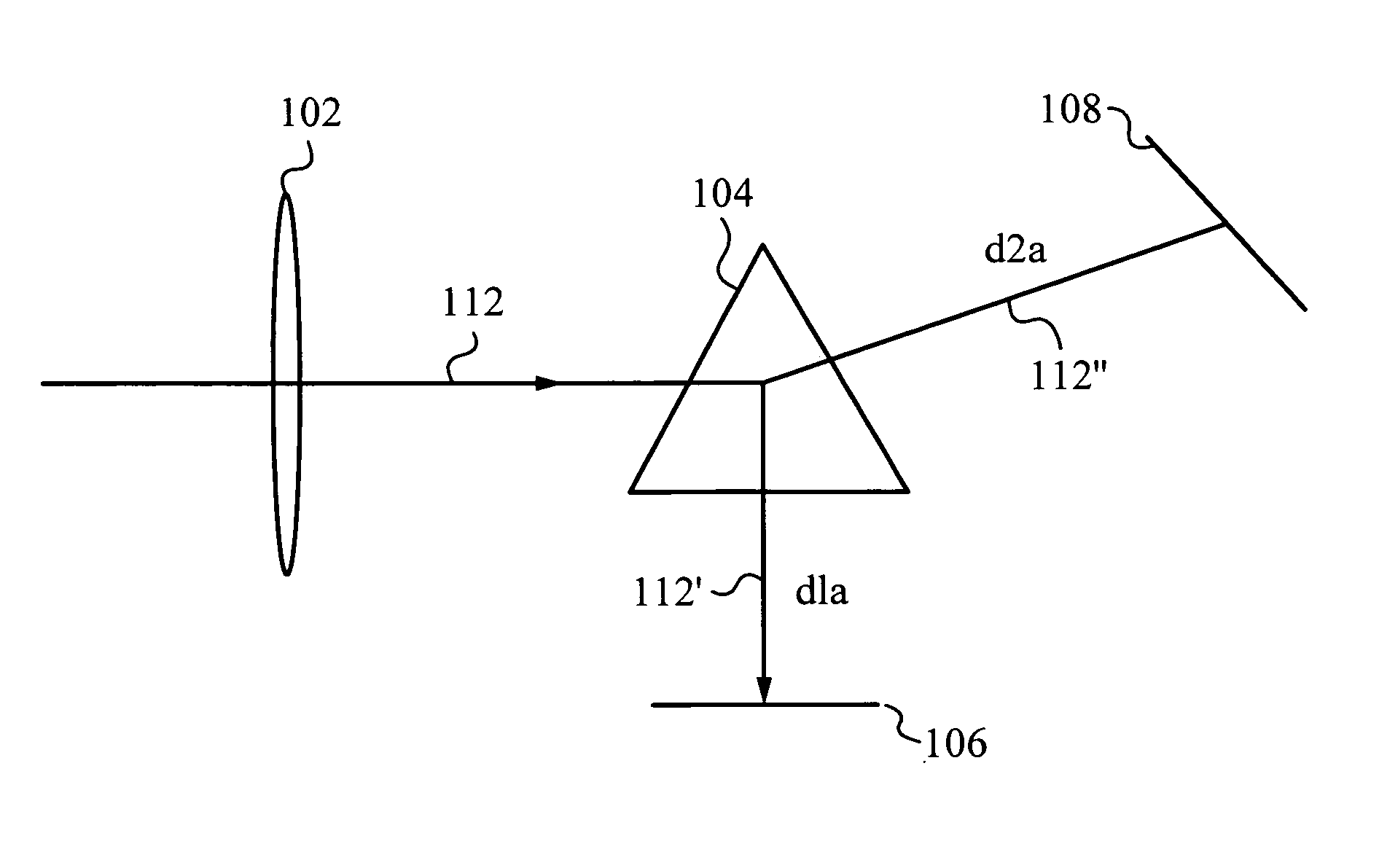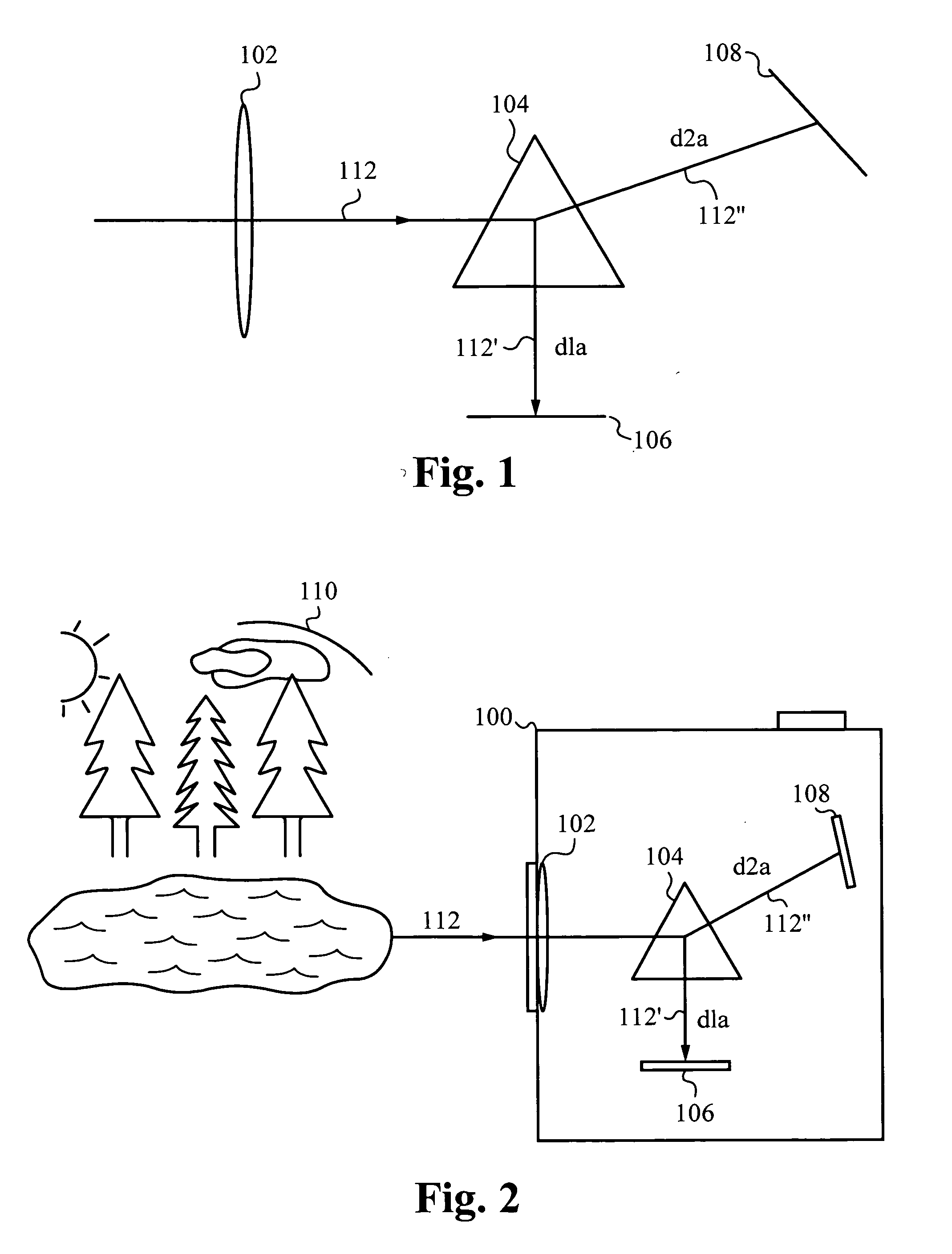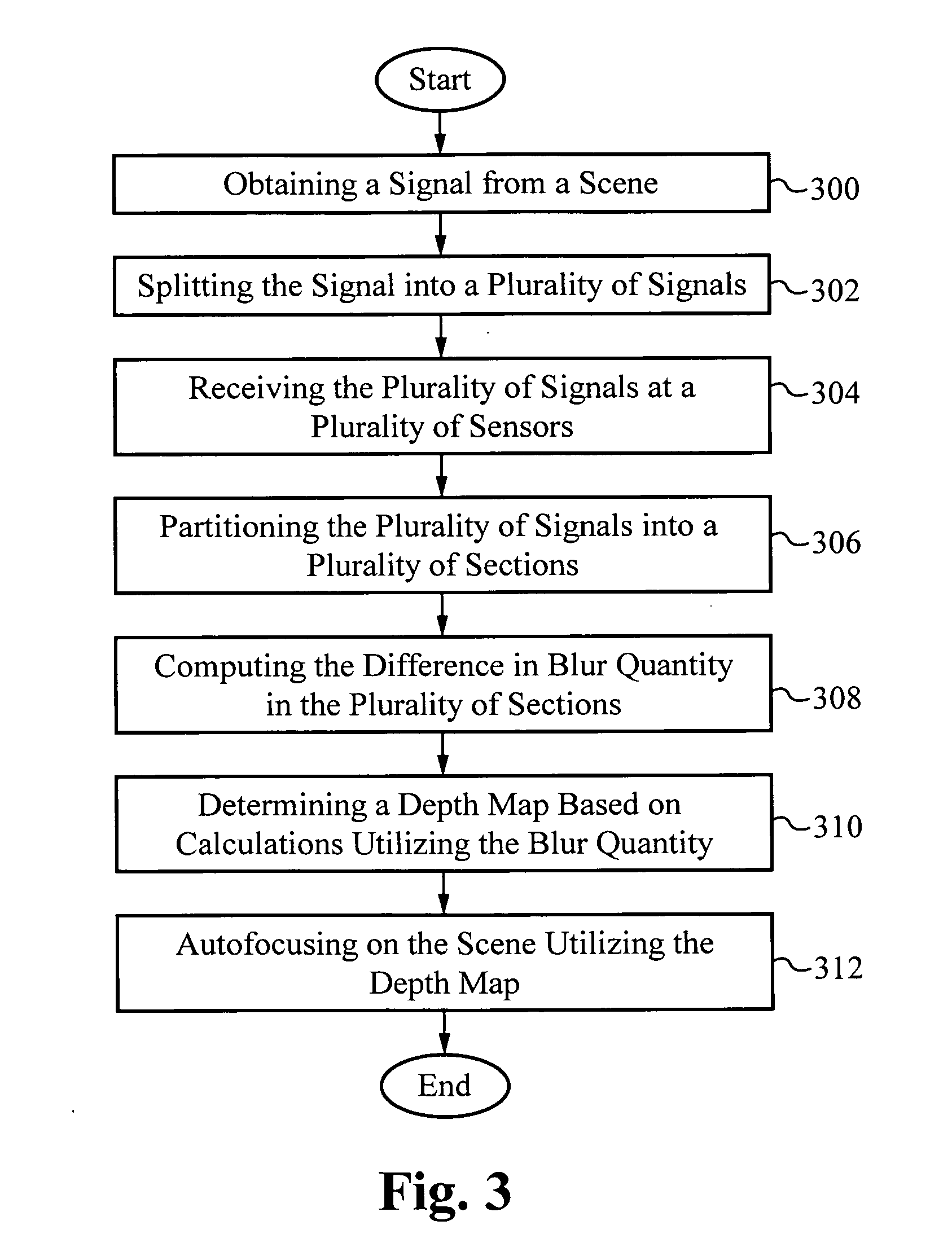Method of and apparatus for simultaneously capturing and generating multiple blurred images
a technology of blurred images and methods, applied in the field of imaging, can solve the problems of inability to use methods, inability to compute two-dimensional fourier transforms of recorded images, and significant drawbacks of cameras and methods,
- Summary
- Abstract
- Description
- Claims
- Application Information
AI Technical Summary
Problems solved by technology
Method used
Image
Examples
Embodiment Construction
[0019] A method to simultaneously generate and capture N blurred images utilizing a camera lens and N imaging sensors is described. A signal passes through a lens and is then split into N signal paths of different lengths using a signal splitting device. Since the physical distances between the lens and the N imaging sensors are different, with different signal path lengths, N uniquely blurred images are captured by the N imaging sensors. Utilizing the N blurred images, computations are performed and blur differences are calculated. A depth map is then determined from the blur differences. With the depth map, a number of applications are possible.
[0020]FIG. 1 illustrates a graphical representation of an exemplary system for capturing a plurality of different blurred images. A signal 112 of the image passes through a lens 102 and is then split by a splitter 104 into signals 112′ and 112″. The two signals 112′ and 112″ travel in different directions and for different distances, where...
PUM
 Login to View More
Login to View More Abstract
Description
Claims
Application Information
 Login to View More
Login to View More - R&D
- Intellectual Property
- Life Sciences
- Materials
- Tech Scout
- Unparalleled Data Quality
- Higher Quality Content
- 60% Fewer Hallucinations
Browse by: Latest US Patents, China's latest patents, Technical Efficacy Thesaurus, Application Domain, Technology Topic, Popular Technical Reports.
© 2025 PatSnap. All rights reserved.Legal|Privacy policy|Modern Slavery Act Transparency Statement|Sitemap|About US| Contact US: help@patsnap.com



